
Lady Seminoles from the 1970s
By Kerry Dunning
August, 2018
I stepped into Doak Campbell Stadium as a student in 1968 and 50 years later into the Champions Club writing about the women's softball championship celebration. Somewhere along the way "throw like a girl" evolved into television courage of women's sports garnering top television ratings and tweets from male athletes.
Since there has been a college in Tallahassee, women have played a multitude of sports, through club sports or intramurals. Mary Lou Norwood say, in "A Century of Women's Sports," Florida State College for Women required "physical culture' classes. Robin Sellers' Femina Perfecta tells of spontaneous basketball games between the Odds and Evens (different mixes of classes) leading impromptu pep rallies in the streets.
 |
Lady Seminoles from the 1970s |
An abundance of success on the field, and a list of very successful and long-tenured coaches took humble beginnings to championships. Most importantly, talented players were given an opportunity. Today there are 79 Varsity Club members from those defining years.
As Dr. Billie Jones, one of the first volleyball and softball coaches said, "It took one girl, probably with her own ball, wanting to play a game, and she sought out a faculty member to help get it started."
Florida State University announced in June a year-long celebration of women's intercollegiate sports. FSU Vice President and Director of Athletics Stan Wilcox said, "It is particularly fitting that we will be recognizing the achievement of our teams, student-athletes and the coaches who helped build our sports to the nationally competitive level we are today."
This most recent evolution began before ESPN's birth, even before Title IX's impact on athletics, during a time when schools grappled with the growing expense of intercollegiate sports. Athletic Director John Bridgers, who inherited a $1 million deficit in the early 1970s, hired Women's Athletic Director Barbara Jo Palmer, and both struggled to aid men's programs and women's intercollegiate teams in their infancy.
"To put it in perspective, when I came in, women had $163,000 and no full-time coaches," said Palmer when she received the NACWAA Lifetime Achievement Award in 2007.
Before that, in the late 1960s, there were coaches but no money. That's where this 50-year history begins.
When Florida State became a co-educational institution, sports clubs like F Club (students with multiple athletic achievements), Tarpon Club (synchronized swimming), Gymkana (gymnastics performance) and the Raquettes (tennis club) gave women an opportunity to compete.
Both men and women had access to a robust intramural program in the 1960s and this allowed many women access to sports they had played through high school but were not yet represented even by sports clubs.
The beginnings of "intercollegiate" began informally in 1958 as tennis hosted college and high school teams, and Jim Joanos in "Tennis, Anyone?" documents travel to schools like Mississippi College for Women, Agnes Scott, the Women's College of Georgia, Rollins, Stetson and the University of Florida. As with other sports, there was a faculty leader (Virginia Dumas) who served as a coach - though not listed as such in Florida State records - who helped organize and find money for travel. The students were responsible for all their equipment.
Many of the same colleges would be opponents when volleyball left its club roots in 1968. Pat Moore coached the inaugural volleyball intercollegiate team. By 1971 volleyball took advantage of the newly formed Association for Intercollegiate Athletics for Women (AIAW), Dr. Jones took over and by 1972 the squad played in its first national tournament. She would finish with an impressive 107-22 record.
"I was a graduate PH.D. student, assistant teacher and was coaching volleyball in the fall and softball in the spring," Dr. Jones recounted in a recent interview.
To find players, they used campus bulletin boards and the Flambeau to ask for anyone interested in playing. Then whoever would show up would go through a couple of weeks of tryouts before the team narrowed down to 12.
The real challenge was then something as simple as finding shirts ($2 long sleeve T-shirts at Kmart) and they had six volleyballs for the season.
They set up their games on weekends so students wouldn't miss classes. Sometimes, they got on a bus, played matches all day, and then got back on the bus because there were no funds for a hotel.
"If we stayed over, it was 4 to a room," Dr. Jones said with a smile. "And it was six to a (state) car." Dr. Jones, now a Professor Emeriti, began as an Associate Professor in the Department of Movement Science and Physical Education. Her volleyball team made it to the AIAW National Championship Tournament in 1973, 1974 and 1975. It is important to note key factors in women's sports getting off the ground. Literally all of the coaches came from the Physical Education Department, and many of the players were Physical Education majors. Secondly, what funding they initially captured came from Student Government funds. "Volleyball did get the first scholarship," said Dr. Jones. "I think it was a leftover football scholarship but it went to a player from New Jersey."
Eddie Cubbon ran intramural sports and administered the beginning women's programs, including finding funding and coaching basketball. Cubbon would also convince Marlene Fernell to come to FSU as the first women's administrator - though the single parent was a graduate student and this was an unpaid position. She is given credit for laying the foundation, policies and structure it would take for multiple fledgling sports to unite under the auspices of the Athletic Department.
Golf (1968) was not a varsity sport in 1948, but had excellent players who took on the men's team, says Bob Perrone in "Early Florida State Women's Golf." Jo Ann Whitaker, who won the Florida Women's State Amateur tournament, and Mary Lena Faulk, who joined the LPGA, set the tone. And in 1981, FSU coach Verlyn Giles led the varsity team to an AIAW national championship.
Track and Field (1969) joined the rapidly expanding but loosely organized ranks of intercollegiate sports. Dr. Frankie Hall took the inaugural team to its first national championship meet sponsored by the Division of Girls and Women's Sports (DGWS). The team would be the first sanctioned team to represent FSU at a national event.
Softball, which also grew out of Odds-Evens events, hit the intercollegiate field in 1969-70 along with swimming and diving. Students approached Judy Blucker, another Ph.D. Student to get a softball team started. Dr. Jones coached the 1971 team to the state championship and the 1974 squad to the runner-up slot.
Barbara Hollingsworth coached the first women's basketball team at FSU in 1970-71. The coaching record for that season and the next, under Linda Warren, is unknown. Cubbon would be the team's third coach and finished 11-5.
This culminated with this year's national championship softball team and a national championship runner-up in beach volleyball. Tennis made it to the Elite Eight, golf finished 12th in the NCAA finals, volleyball and basketball advanced within the NCAA, and track and field finished first in the ACC (indoor) and third in the ACC (outdoor) sending student-athletes to the NCAA tournament in each.
Dr. Jones wouldn't trade the experience, but did say, "I think if I had it to do over, I'd like to be a little wiser … and I'd like to be better at speaking out."
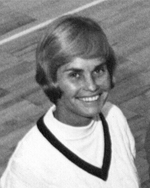 Dr. Billie Jones |
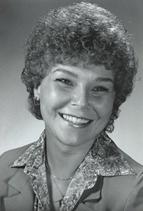 Barbara Jo Palmer |
 Pat Moore |
 Marlene Furnell |
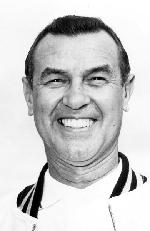 Eddie Cubbon |
 Verlyn Giles |
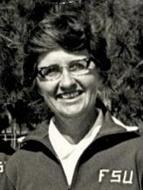 Dr. Frankie Hall |
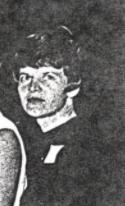 Judy Blucker |
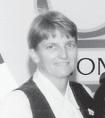 Linda Warren |